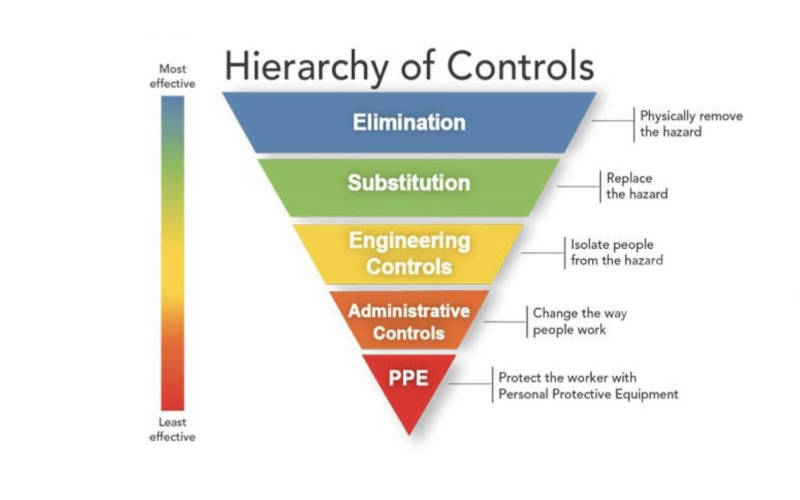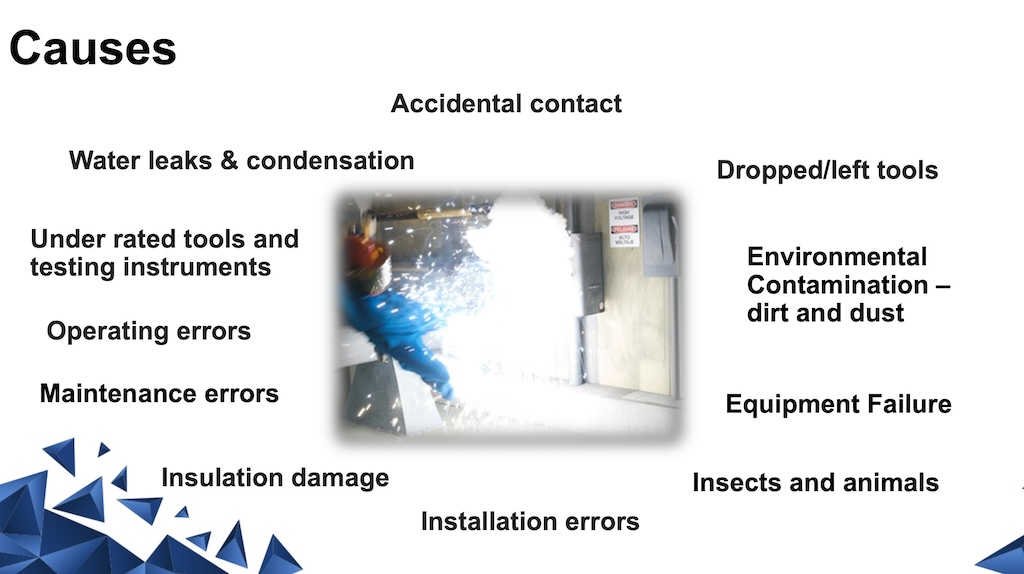Ever wish there was a simple way to interpret the OSHA regulations and the NFPA 70E? It seems like the more these documents are discussed, the more complicated things become. Well, there is a way to see clearly through the regulatory clutter with nine simple steps.
Ever wish there was a simple way to interpret the OSHA regulations and the NFPA 70E? It seems like the more these documents are discussed, the more complicated things become. Well, there is a way to see clearly through the regulatory clutter with nine simple steps:
1. Turn it off! Electricity has been characterized as a toxic substance, but how do we think of it? “Man’s Servant,” or more accurately, “Pixie Dust.” It is toxic. Even small doses (less than 100 V) can be fatal under some circumstances; 110 V will do the job very nicely.
In a paper presented by Danny Liggett and Lanny Floyd to the IEEE PCIC, 480 V was shown to account for 45% of electrical shock fatalities, and 120-240 V accounts for 39%. Now that’s pretty toxic! The only way to eliminate the hazard is to shut it off.
OSHA, in 29CFR1910.333 states, “Live parts to which an employee may be exposed shall be de-energized before the employee works on or near them,” Now, that’s very clear: shut it off. However, immediately afterwards it also states, “unless de-energizing introduces additional or increased hazards or is infeasible.”
Once OSHA used the word “unless,” the focus was taken from de-energizing, to the exceptions. It is human nature to be distracted by the exception. Don’t be fooled into thinking that OSHA thinks working energized is acceptable. They don’t. Refocus on the rule, not the exception. If there is any way to de-energize, that is what must be done.
2. Perform field safety audits. Previous to my job at Shermco, I was the electrical field services manager and the compliance officer of an electrical service provider. A big part of my job was visiting job sites and performing onsite safety audits of our personnel. Our employees would throw their hats on the ground in disgust when they saw me pull up, because they knew I would be thorough. However, those safety audits made everyone keep safety at the forefront of their work day. When there was a lapse of field audits, everyone slacked up a bit. People just naturally pay more attention if there is going to be a “test.”
3. Train your employees. OSHA 1910.332 states: “The training requirements contained in this section apply to employees who face a risk of electric shock that is not reduced to a safe level by the electrical installation requirements of 1910.303 through 1910.308.
Note: Employees in occupations listed in Table S-4 face such a risk and are required to be trained. Other employees who also may reasonably be expected to face comparable risk of injury due to electric shock or other electrical hazards must also be trained.”
If you either perform work on systems rated 50 V or greater to ground, or supervise workers who do such work, you need training on the Electrical Safety-Related Work Practices regulations and NFPA 70E. Training also leads into the next point — qualified electrical workers.
4. Electrical workers must meet OSHA’s definition of qualified. Oh, by the way, that definition changed considerably in August 2007. The definitions section of 1910.399 now states, “ Qualified person. One who has received training in and has demonstrated skills and knowledge in the construction and operation of electric equipment and installations and the hazards involved.” The highlighted portions are the major changes to the definition. Note that the training must have been received and demonstrated and that the operation of the system is now included. This is to ensure workers know what is going to happen when they throw the switch.
5. Assess the hazards. In 1910.132(d)(1) OSHA states: “The employer shall assess the workplace to determine if hazards are present, or are likely to be present, which necessitate the use of personal protective equipment (PPE). If such hazards are present, or likely to be present, the employer shall: (i) Select, and have each affected employee use, the types of PPE that will protect the affected employee from the hazards identified in the hazard assessment.”
Arc flash studies are one such method of complying with this regulation. By labeling electrical equipment as to the hazards and safe approach boundaries you have gone a long way to discharge your responsibilities. This includes your responsibilities to contracted employees. If they are injured on your site, your potential liability increases because they are contracted and not regular employees. You need to know who is showing up on your site to do the work. See the definition of qualified person.
6. Conduct job briefings. Any time a hazardous task is to take place, a job briefing must be conducted. The briefing should cover the hazards that may be encountered, what PPE is to be used, emergency contact numbers and procedures, any extraction procedure or other emergency procedure that may be needed, what work is being done in the area and if any work is being done on the circuit you are working. Needless to say, lockout tagout (LOTO) would also be covered.
7. PPE use must be enforced. OSHA does not issue suggestions. Regulations are Federal Law and OSHA states (29CFR1910.335), “Employees working in areas where there are potential electrical hazards shall be provided with, and shall use, electrical protective equipment that is appropriate for the specific parts of the body to be protected and for the work to be performed.”
The operative word is “shall.” No choice. There are a million reasons for not wearing it — and only one to wear it — you’ll go home instead of to the hospital. I often hear people in my training classes say, “What are the chances of that happening?” This is usually followed by some statement about how nothing has ever happened in 10, 20, 30 years. Okay. Valid point. Except, can anyone pinpoint the exact time at which the equipment will fail, so we can just wear it then? Our company has investigated equipment failures, with serious injuries, when the equipment was only five years old and well maintained. If you cannot see into the future, wear the PPE.
8. Employees cannot perform energized work if unable to do so safely. This is referring to situations where the worker is inebriated, too ill or fatigued to function properly. It could also refer to reactions to over-the-counter medications. Have you ever read the warnings on the back of sinus medication? In some states, if you have a blood test and the level of some of these medications exceed prescribed limits, you can be charged with DUI!
9. Never tell someone to do something you know is unsafe. Read the definition of a Willful Citation: “A violation that the employer knowingly commits, or commits with plain indifference to the law. The employer either knows that what he or she is doing constitutes a violation, or is aware that a hazardous condition existed and made no reasonable effort to eliminate it.”
Can you spell “go to jail?” If a worker is killed, going to jail is a real possibility to the supervisor or manager who made the decision to work unsafely. Does it happen often? Often enough to make me think about it.
Really, it is a matter of common sense. The problem is, as my dad would say, “There’s nothing common about common sense.” We get caught up in production, getting things running again or don’t have the knowledge or background to understand the issues and we make a bad decision. Step back, take a deep breath and review these nine steps to electrical safety. It could save a lot of time and money — or someone’s life.



